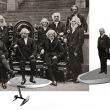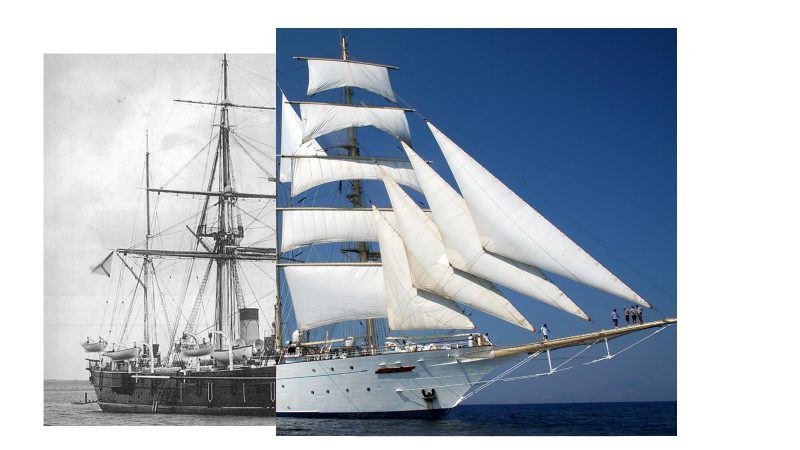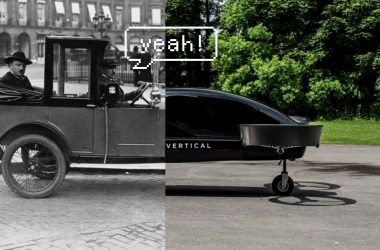Only the sea, wind and the sun are in the skies.
It’s an amazing feeling to fly on the wings of sails when your soul is captivated by the oncoming waves and when all you can hear is the sound of the water breaking on the bow.
For many years, people sailed using sails. The first sailboats were made back in Ancient Egypt in approximately the 4th millennium BCE. The wind was the only force that moved ships along rivers and across seas and oceans. The invention of steam machines and internal combustion engines naturally influenced the designs of sea transports.
The goal of creating the Oceanbird
Ships started being made of metal. Ship propellers were used instead of sails, and a combustion motor replaced the wind. All of this was excellent for speed, cargo capacity, and in making ships easier to steer, but it was bad for the environment. Commercial ships are heavily polluting the Earth’s atmosphere. They produce 2.5% of the carbon dioxide, 18-30% of the nitrogen oxide, and 9% of the sulfur oxide emissions.
One day, a Swedish engineer from the company Wallenius Marine in 2019 had the idea to go back to basics and put sails on large ships. Let the wind once again aid commerce and sea logistics. They set themselves a goal to create a ship to transport large amounts of cargo that would sail using the wind and sails.
The ship is made to transport 7000 cars across the Atlantic and will be used for other purposes if it is successful. The Swedes called the concept ships Oceanbird. 5 giant 260-foot metal sails can move the ship from one side of the ocean to the other in 12 days at an average speed of 10 knots.
Although a normal ship using carbon fuels can cross the Atlantic 4 days faster, they have a different goal in mind. They are trying to reduce atmospheric pollution and the Oceanbird produces 90% fewer emissions. Again, it’s a direct benefit for shipowners because of the saved fuel.

The Oceanbird is 660 ft long, 130 ft wide and displaces 32,000 tons. It will be the world’s tallest ship and be like a floating skyscraper. Its sails will be 340 feet in the air. Nevertheless, if necessary, because of storms or crossing under a bridge, the metal and composite sails can be lowered to just 66 feet tall.
It’s worth noting that the Swedish ship will have an engine that uses hydrogen fuel. It provides assistance in maneuvering around land or in ports and can also keep the ship moving in case there’s no wind.
The project’s creator is solving these main problems:
- create an ecological and economical commercial ocean cargo liner.
- create a precedent for broader use of similar ships for commercial purposes.
Complexities in designing Oceanbird
While designing the ship, the designers solved several critical issues.
While developing the ship’s hull designed to transport heavy cargo for long distances, they used a mix of aviation and naval techniques. To test their design concept, they used computer modeling and physics experiments on large-scale models. The Oceanbird is to avoid using robotized steering elements in favor of advanced manual control, which will definitely make it more convenient to steer and more reliable.
Swedish engineers and experts also stepped away from using the standard configuration of traditional fabric sails and internal combustion engines. The Oceanbird concept model used a more efficient and environmentally safe system. It only uses the wind and gently adjusts to follow its changes and direction. The sail-wings are controlled with an algorithm that is capable to calculate the most effective use of wind energy in the open ocean.

Scientists used lidars to observe and steady the wind. Lidars are sent into the air up to 984 feet above the decks. By measuring 35 million different points, the engineers determined that despite previous ideas, the wind speed doesn’t vary very much.
Another important discovery was the ability to “catch the wind’ does not depend on the sail’s shape. It turns out the ship’s hull shape also can affect the strength and direction of the wind on deck.
Lidar (Light Detection and Ranging) is a technique to measure distance using a laser (light beam) and the time required for the reflected light to be received.
Everything is important in the ocean, and safety is above all. That’s the most important thing to consider in a design, so they dedicated great attention to practical issues.
For example, what could happen if the wind suddenly changed direction or speed? There are cases when the wind flips 180 degrees and accelerates from 15.6 mph to 67 mph in just 30 seconds. Traditional sails break in such circumstances. But that’s highly preferable to the ship capsizing. So, they needed to more frequently update the weather reports and what they knew about the speed of changing the sails’ area in designing Oceanbird.

Another important factor was the stability of a ship with such tall sails. Using computer modeling and tests with scaled models, the optimal form for the submerged portion of the hull and the volume of the necessary ballasts, both with a full cargo, hold and without cargo were determined. The specially designed hull stabilizes the ship, so it doesn’t sway more than 5 degrees even without the ballast. With the ballast, nothing is noticeable at all.
What’s been done and the creators’ real plans
The Oceanbird already has a team. Oceanbird is a winner of the Wind Propulsion Innovation Awards 2021, which was organized by The International Windship Association (IWSA) for advancements in wind-energy shipbuilding.
At this moment, a prototype 1/10 the scale with four wing-sails has been made. A special crew is involved in the tests, and it is led by a captain who has tested ships in various weather conditions, but who has also developed various algorithms to steer ships.
The scaled model passed its tests successfully. At the end of last year, the rocking angles, engine and ship wheel were tested. In stage two of development, Oceanbird will be sent to sail by the end of 2024.
The project team aims to create a transatlantic car transport ship operator completely equipped with Oceanbird ships by 2025.








